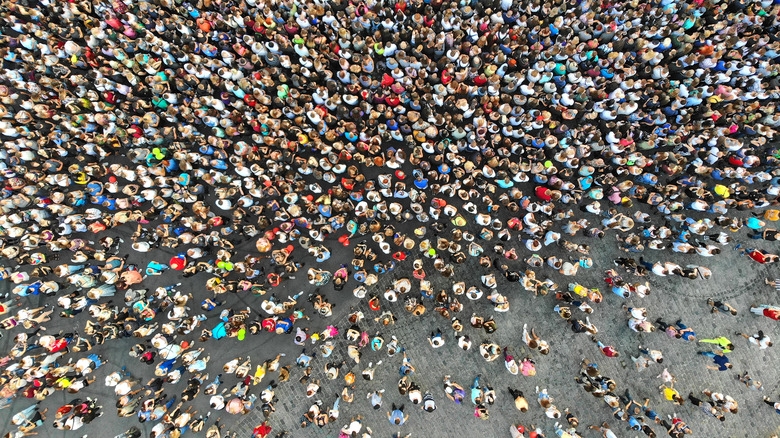How Crowd Surges Can Kill People
At about 9:15 p.m. on Friday, November 5, at Travis Scott's Astroworld Festival in Houston, Texas, catastrophe struck concertgoers. Even organizer and rapper Travis Scott had just taken to the brightly lit stage at NRG Stadium, as BBC says, and the crowd of 50,000 people all started pushing toward him. In what's dubbed a "crowd surge," the crush of human bodies pressed and pressed on those closest to the stage and those trapped in pockets in between. In the end, eight people were left dead, and dozens left injured. "I'm absolutely devastated by what took place last night," Travis Scott has stated on Twitter. "I am committed to working together with the Houston community to heal and support the families in need." The second day of the festival was canceled.
The name "crowd surge" says it all, similar to a storm surge where hurricane-force winds drive ocean waves onto the shore. In this case, human bodies are the waves. People don't die from getting trampled or stampeded in a crowd surge, as ABC News explains. They stay standing up, unable to fall, pressed by the mass of bodies around them until bones break, lungs collapse, or they just can't breathe. All the while, such terrified individuals are aware of the injuries sustained by their bodies but can't even lift a finger to do anything, or possibly even speak. Other times, people are pressed against walls, fences, or other structures. It's a truly terrible and senseless way to die.
Workable safety solutions for preventable tragedies
Event organizers are aware of the dangers of tens of thousands of people, even hundreds of thousands or more, packed together and standing shoulder to shoulder, jostling each other, dancing, pushing, taking videos on their phones, and so on. Open fields without seats or divided areas are easily the most dangerous places, such as NRG Park at Travis Scott's Astroworld Festival. G. Keith Still, visiting professor of crowd science at the University of Suffolk in England, said on ABC News, "As soon as you add people into the mix, there will always be a risk." He continued, "Safety has no profit, so it tends to be the last thing in the budget." Still has testified as an expert witness in cases involving crowd management, saying that "invariably they all come down to very similar characteristics."
Setting up pens around stages is a common safety strategy, to break up the crowd into smaller groups. Pens also provide avenues for security officers to intervene, as well as concertgoers to escape in case of an emergency. Partitioning the concert grounds is another strategy, to scatter what is otherwise just a single mass of people on an open patch of land. In some cases, sudden weather events or yells like "he's got a gun!" (whether true or not) can cause people to suddenly surge. Such things are hard to predict, but can still be taken into account when event planning.

